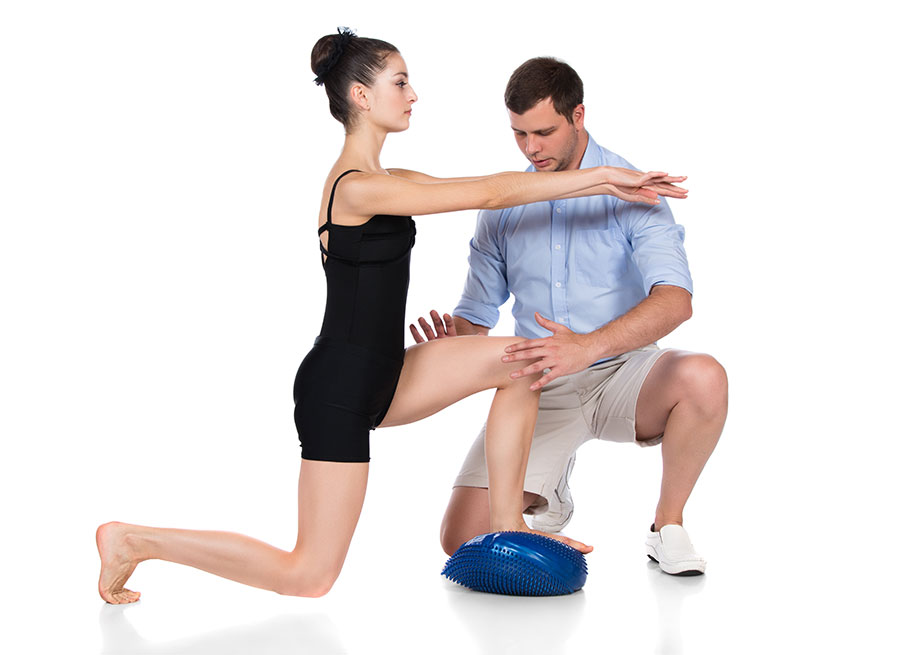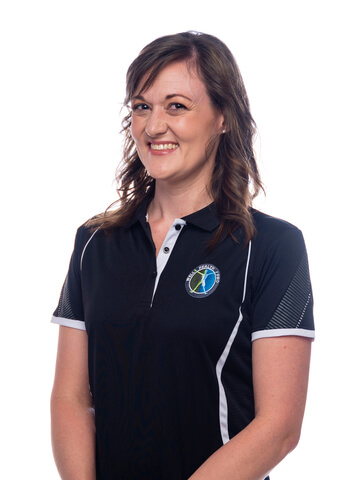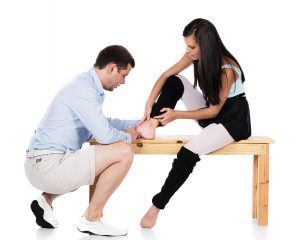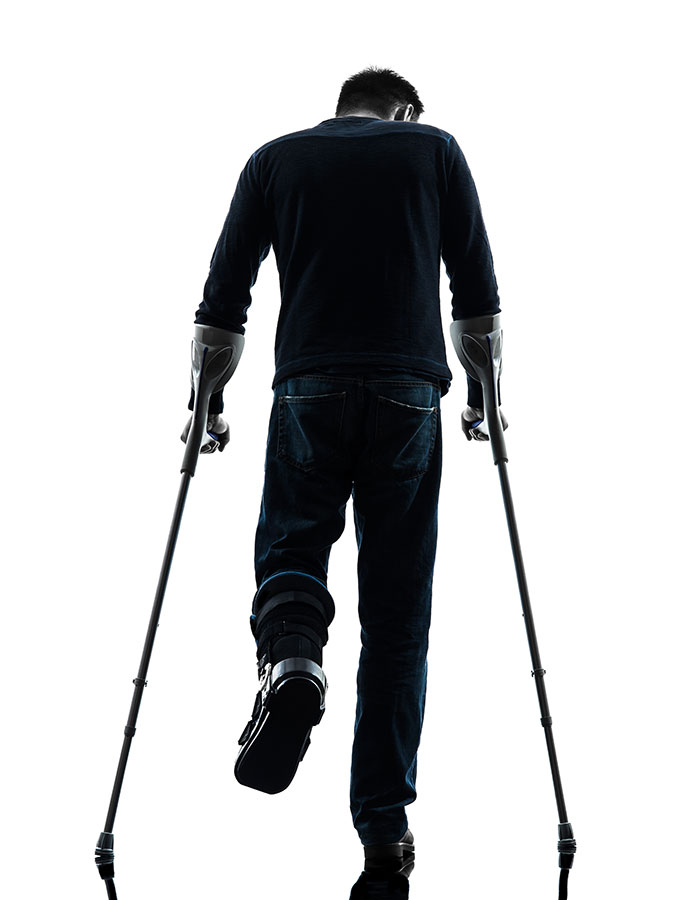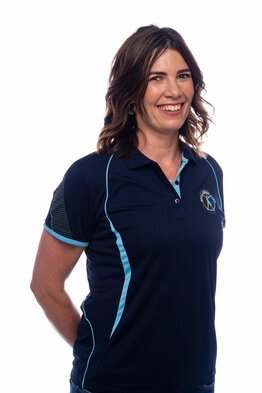You may have heard the word rehabilitation used on television or if someone you know was in the hospital after a serious accident. But did you know that rehabilitation isn’t just necessary after major incidents?
A rehabilitation program gets you back to normal, and even better. Rehabilitation means “resorting back to normal”, and program means it’s a structured plan to achieve certain goals, milestones and benchmarks. Recovery and rehabilitation assumes that there’s already something wrong – abnormal. We provide the roadmap to recover you back to optimal function. If you want to know how, we need to look at things that limits you.
If your normal is getting out of bed in the morning, getting ready and then driving to work, something like shoulder pain will definitely interfere with you getting things done. Every time you move, the pain reminds you that you are having a bad day compared to days when your shoulder wasn’t painful. Or your ‘normal’ might be running 3 times a week and doing a park run on Saturdays. A knee meniscus tear or hamstring tendinopathy will stop you in your tracks. All these problems needs different approaches to a rehabilitation program. Where you want to be will determine what we have to do to get you there.
What exactly is Rehabilitation?
Rehabilitation is a very broad concept. In physiotherapy, we use rehabilitation to “restore, compensate, prevent or slow deterioration in functioning to help individuals reach their optimal levels.” This is the ultimate goal of rehabilitation, but how we get there is unique to each individual. If you woke up with a stiff and painful neck this morning, your rehabilitation journey will differ from someone who had a total knee replacement a month ago. There will even be differences between someone who had a knee replacement a month ago versus someone who had exactly the same operation a year ago. And, believe it or not, two patients who had the same operation on the same day can also have different problems and goals.
Why we use Physical Rehabilitation
Physiotherapists use rehabilitation from your very first session to prioritize the order of problems that must be fixed. Our initial assessment gives us information to diagnose your problem and identify the entire scope of the injury. From there we devise a treatment plan, keeping in mind where you want to be at the end of your rehabilitation. A diagnosis helps us to make sure we guide you towards realistic goals. For example, a calf muscle tear heals and the muscle can return to full function. However Shoulder osteoarthritis or cervical spondylosis, on the other hand, aren’t reversible and do not “heal” like a muscle tear. The goal of rehabilitation in these cases will be to restore as much function as possible and maintain that function for as long as possible.
In a more practical sense, we use rehabilitation programs to address a wide range of problems including:
- pain
- fear of movement
- anxiety about your condition
- abnormal movement patterns
- limited range of movement or stiffness
- impaired balance and proprioception
- muscle weakness.
Benefits of a Rehabilitation Program
- Enhance performance
- Movement pattern retraining
- Promote blood supply to injured tissue
- Muscle strengthening
- Gain flexibility
- Decreased muscle spasm
- Builds muscle endurance
- Pain relief
- Maintains improvements in mobility
- Limits future painful episodes
“Do what you have to do, until you can do what you want to do.”
Oprah Winfrey
Physical Rehabilitation
In most cases, physical rehabilitation can be broken down into 5 phases.
1. Protection
This is where we assess and diagnose your injury. An accurate diagnosis will determine how much protection the injured structure needs and also how long before you can start increasing load. The goals of each next phase of rehabilitation is influenced by this initial assessment and diagnosis.
2. Active range of movement and movement pattern retraining
After reaching the goals of phase one, you progress to the movement phase. By now, inflammation has settled and the injured structure has started healing. This means that we can start increasing movement, but still within limits of pain to prevent reinjury. The goal of movement pattern retraining during this phase is to ensure that you can control the movement as it improves. Basically like testing and calibrating the brakes in a car to make sure you can move or stop when you need to.
3. Initial strengthening and endurance training
Your rehabilitation program will start to include resistance exercises and higher repetitions to start building muscle strength and endurance. This phase focuses on gaining strength in the new range and maintaining sufficient stability for the surrounding structures.
4. Strength training and full range of movement
By this phase you should have minimal pain, and we can start working for full movement of the injured structure. Your exercise program will include higher loads and more complex movements.
5. Return to full activity
The goals we set in the first phase of rehabilitation determines what return to full activity means to you. It might be back to weight training in the gym 5 days a week, walking your dog in the afternoons or hiking with your kids.
The timelines for each phase varies because every individual will have different goals and a different profile. Factors like age, gender, previous injuries, health, conditioning, and even your home and work environments influences your progress. But don’t despair, your physiotherapist is there to guide you through the ups and downs of rehabilitation.
Different types of application
Rehabilitation has many aspects and can be divided into 4 main categories, according to the goal of the treatment.
Preventative
Preventative rehabilitation occurs shortly after an injury or, in some case, where there wasn’t an injury. The main goals will be to give you advice and information about your condition, treat symptoms and maintain or restore function.
If there wasn’t an injury, preventative exercise programs is used for specific age groups or conditions. For example, the risk of falling increases with age, so general strengthening and balance exercise programs are useful in older populations to decrease this risk.
Another example is screening someone who wants to start exercising after a long period of inactivity. In these cases, we use movement and strength tests to identify muscle imbalances or movement dysfunction that can put you at risk of injury. These tests are used as preseason screening for athletes. A individualized rehabilitation program is designed according to what we identify during the tests.
Restorative
After surgery or an injury, rehabilitation will aim to restore what was lost. In the case of an ankle sprain or lower back disc injury, you lose mobility due to pain, so the initial aim of rehabilitation will be to restore movement using movement pattern retraining, mobility- and strengthening exercises. After an operation, like a rotator cuff repair or knee meniscus surgery, rehabilitation starts at the protection phase until the repaired structures are strong enough to handle movement. Information like what to do and what to avoid also plays an important role, especially in the early phases of rehabilitation.
As your pain and mobility improves, the focus of rehabilitation shifts to muscle strengthening and building resilience. In these later phases we aim to get you back to where you were before the injury and, very importantly, to limit your risk of reinjury.
Supportive
Also known as adaptive rehabilitation, the focus is centered around helping you adapt and find alternative ways of performing an activity. For example injuries that don’t heal completely, like a stroke, or permanent impairments like amputations.
Palliative
The aims of rehabilitation in terminal conditions or incurable diseases focuses on helping patients to be as comfortable as possible within the limits of their condition.
Neuromusculoskeletal (nerve-muscle-joint) changes:
- Nerves – your body learns by doing. Therefore, as you repeat movements and exercises, your nervous system can start to anticipate what should happen. This leads to improved nerve conduction and muscle activation. A rehabilitation program also aims to decrease sensitivity of the nerves and allow full, pain free range of movement.
- Muscles – you will notice in improvements in muscle strength, endurance and flexibility when you complete your rehabilitation program.
- Joints – stiffness and muscle weakness affect how well you can move. Your exercise program helps you to achieve better mobility and stability which also leads to decreased pain when you move.
- Tendons – tendons respond to loading, so rehabilitation aims to increase stiffness and resilience of tendons.
- Ligaments – after a ligament injury, any tension on the ligament will be painful. Your exercise program focuses on strengthening the structures around the injured ligament to promote healing and help to protect it from subsequent injuries.
Other changes you’ll notice:
Biomechanical
As you progress through your rehabilitation program, you will notice that your movement patterns improve. You will start to move more efficiently, using less effort, with less strain on you body.
Neural
Physical rehabilitation is all about learning new skills or adapting existing skills. This is achieved by repetition. As you repeat movements and patterns, your nervous system (in other words your brain and nerves) stores this information until you’ve learnt a new habit. At the end of your rehabilitation you’ll look back and find it hard to believe that you ever had trouble with the movement. Learning something new takes time, but is definitely worth the effort.
Functional
In your day to day activities, you will notice that you can start doing things that used to cause pain. For instance, if you have lower back pain, sitting for longer than 10-15 minutes will be a challenge. As you get stronger and more conditioned with your rehabilitation program, you will be able to sit for longer periods until you don’t even notice your back anymore. Or if you have shoulder bursitis, you won’t be able to sleep on that side due to pain in your shoulder. One morning you will wake up lying on your shoulder and be surprised that the pain didn’t wake you.
Clinical
As you continue rehabilitation, you will notice improvements in range of motion and decreased swelling (if you had swelling to begin with). Measurement values improves, while you score better at specific control tests. It’s even harder to bring on the pain. Your proprioception or balance also improves.
Psychological
Information and education are crucial parts of rehabilitation, and knowing what is causing your problem already puts your mind at ease. Identifying the problem is the first step to fixing it. However, having this diagnosis is only the beginning, because the next step involves creating a plan on how to manage and treat it. We aim to empower you during rehabilitation to help build resilience.
Another important benefit of a rehabilitation program is giving you back your confidence. Not confidence in the sense of getting on a stage and performing, but rather having confidence in your own body. You won’t be fearful to get into your car or climb a step anymore. Where you may have hesitated to pick up a heavy bag in the beginning, in the later stages of rehabilitation you’ll know that your body can handle.
Cardiovascular system
Depending on your goals and activities, a rehabilitation program also improves your cardiovascular fitness. Whether you want to run an ultra marathon or just walk around the mall without needing a rest every 5 minutes, your physiotherapist can add components to your exercise program to get you where you want to be.
A Rehabilitation Program feels like:
A proper rehabilitation program is different for each person. Rehabilitation involves many different principles and techniques, because it’s an ongoing healing process.
For example, during your first session you’ll get a lot of information about your diagnosis, factors that contribute to your problem, and what needs to happen, what to avoid and how long it’s going to take. This information is a vital part of rehabilitation; you aren’t just an observer, you have an active part in every step of the process.
There will be times during rehabilitation when feel uncertain, frustrated or even disappointed. Sometimes you might wonder if it’s normal for rehabilitation to take so much time. You could feel frustrated that that your progress is too slow. Other times you may feel disappointed that you couldn’t do things as well as you wanted to. When this happens, use the time in your session to discuss your progress, fears and frustration with your physiotherapist. It might be time to adjust some of your goals or do a reality check on your expectations. Physios are experts at solving problems. You may not get the solution you were hoping for, but we will always do our best to help you get as close to it as we can.
Rehabilitation isn’t just one piece of information, one technique or a single exercise – it’s the golden thread that connects each and every piece to get you back to being the best you can be.
How long does rehabilitation take?
Physiotherapy appointments are booked for 60 minutes, but the amount of time spent on rehabilitation varies from session to session. Most sessions includes many different aspects of rehabilitation like re-assessment, education, retraining or correcting movement, exercises and hands-on treatment.
How many times should I get a rehabilitation program?
Your rehabilitation program will evolve and change as you heal and get stronger. The human body adapts over time, which means that your treatment should also adapt to keep you moving forward. For example, if the exercises are too easy you’ll stay where you are in terms of strength. On the other hand, if the exercises are too difficult, you will risk further injury and the healing process has to start all over again. Physiotherapists are experts in rehabilitation, so we monitor your progress and change your rehabilitation program as often as needed.
Your physiotherapist discusses your treatment plan with you and we’ll give you an idea of how long it will take for your condition to improve and how often treatment is needed. In some cases you’ll need 6-8 sessions. Mostly we see you twice during your first week, and once a week for the next two weeks and then once every second week in the next month.
What can I do at home to ensure rehabilitation is effective?
Remember that rehabilitation is a marathon, not a sprint. There are ups and downs during the process, but there are some things you can do at home to ensure that you keep moving forward.
- Make time in your day to do your exercise program.
- Be present and focused when you do your exercises.
- Follow your physio’s advice on rest, activity and positioning.
- Rather ask if you’re unsure if it’s safe to do something.
- Be mindful of what you feel and let your physio know what makes your symptoms better or worse.
- Don’t give up. Rehabilitation takes time, so don’t be too hard on yourself if your progress is slow.
Cost of a Rehabilitation Program
There is a designated medical aid rate for rehabilitation, but it is always used as part of a complete treatment consultation. Therefore, you will never be paying only for a rehabilitation program.
Rehabilitation isn’t something you can fast forward – it’s both the journey and the destination. Be patient with yourself, the end results will be worth your time and effort.
Medical Aid Code – 501
The treatment code 501 is used for rehabilitation during your session. This code applies for half an hour of your medical practitioner’s undivided attention. All forms of rehabilitation count towards the half an hour. The ultimate goal of rehabilitation is to get you back to optimal function, so this can include counseling, teaching you new skills, specific exercises, and treating your pain. Some of the assessment techniques used are also therapeutic and assist rehabilitation. Most medical aids offer reimbursement for rehabilitation.
Does it make a difference to get a rehabilitation program from an experienced physiotherapist?
Absolutely! Rehabilitation is a core skill of physiotherapists and like most things in life, practice makes perfect. This skill gets more accurate and efficient with experience. A practiced eye can see small compensations and abnormal patterns in movement. From experience, your physiotherapists also know which cues to use and where to find what’s causing the compensation. Communication is a skill on its own, and our physiotherapists always works hard to help you understand the “what” and “why” of a rehabilitation program.
Even though you can find any exercise imaginable on Youtube or Facebook, just watching a video won’t tell you if you’re doing the exercise correctly. The Internet can only give you general exercises and advice, without knowing your specific problem. There is a good chance that you can make it worse by repeating a wrong movement or exercise over and over again.
Our physiotherapists have years of clinical experience and in depth knowledge of your body’s anatomy. They understand biomechanics and how it will affect different painful conditions and injuries. They can use the right techniques, modalities, and an individualized rehabilitation program to help you with optimal recovery. Don’t settle for ordinary.
Other rehabilitation answers:
